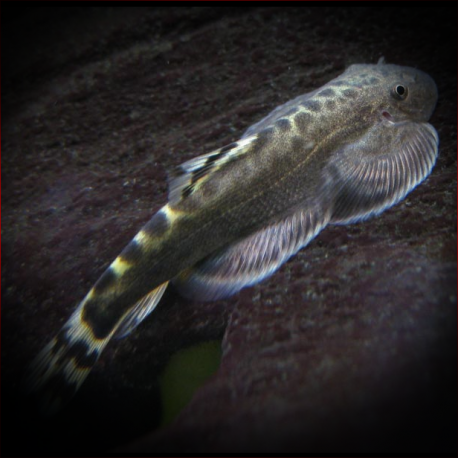More info
Datasheet
| Minimum Tank Size | 90 litres / 23.78 US gallons |
| Maximum Size | 11.0cm / 4.33inches |
| Temperature | 17°C / 62.60°F - 23°C / 73.40°F |
| Hardness | 5.04dgH / 90ppm - 15.02dgH / 268ppm |
| pH | 6.5-8.0 |
Behaviour:
Sinogastromyzon wui is very peaceful but requires specific environmental conditions for suitable tankmates. It should not be housed with much larger, aggressive, territorial, or competitive fishes. Potential tankmates include small, pelagic cyprinids such as Tanichthys, Danio, and Rasbora, stream-dwelling gobies from genera like Rhinogobius, Sicyopterus, and Stiphodon, and rheophilic catfishes such as Glyptothorax and Akysis. Some loaches from specific families are suitable, but thorough research is essential before introducing them. These fish are loosely gregarious, and groups of four or more enhance their interesting behavior. While territorial to an extent, some individuals display more protective behavior, often related to gender differences where males can be more aggressive.
Feeding and Diet:
S. wui are specialized micropredators, feeding on small crustaceans, insect larvae, and other invertebrates, with occasional algae consumption. In captivity, they prefer live or frozen foods like Daphnia, Artemia, and bloodworms. Growing algae in the tank is beneficial, and maintaining a separate tank to cultivate algae for switching with the main tank can be necessary. To recover emaciated specimens, a constant source of suitable food is crucial, especially in the absence of competitors for weakened individuals.
Reproduction & Dimorphism:
While there is no recorded information about their reproduction in aquariums, S. wui are hypothesized to be seasonal spawners in nature, laying demersal eggs. Males have a slimmer body shape, with a sharper angle where the pectoral fin meets the head, while females exhibit the opposite characteristics.
Habitat and Distribution:
Found in the middle and upper reaches of rivers and streams, S. wui inhabits riffles or rapids with swift currents. They prefer shallow habitats with substrates of pebbles and rocks, devoid of aquatic vegetation, facilitating the growth of biofilm. Their distribution is limited to parts of the Xi Jiang watershed in Guangxi Autonomous Region and Guangdong Province, southern China.
Aquarium Setup:
Setting up the aquarium to resemble their natural habitat is crucial. Use gravel, sand, water-worn rocks, and boulders with driftwood for décor. While most aquatic plants struggle, hardy types like Microsorum or Anubias can be added. Clean water, high oxygen levels, and water movement are vital, requiring powerful filtration and stable conditions. A tightly-fitting cover is recommended as they can climb glass.
Etymology:
The genus name "Sinogastromyzon" originates from Latin "sina" (from China), Greek "gaster" (stomach), and Greek "myzo" (to suckle), reflecting their unique feeding habits.
Family:
S. wui belongs to the family Balitoridae, which is widely-distributed across the Indian subcontinent, Southeast Asia, and China. The family Gastromyzontidae contains former balitorids, but Sinogastromyzon remains in Balitoridae.

